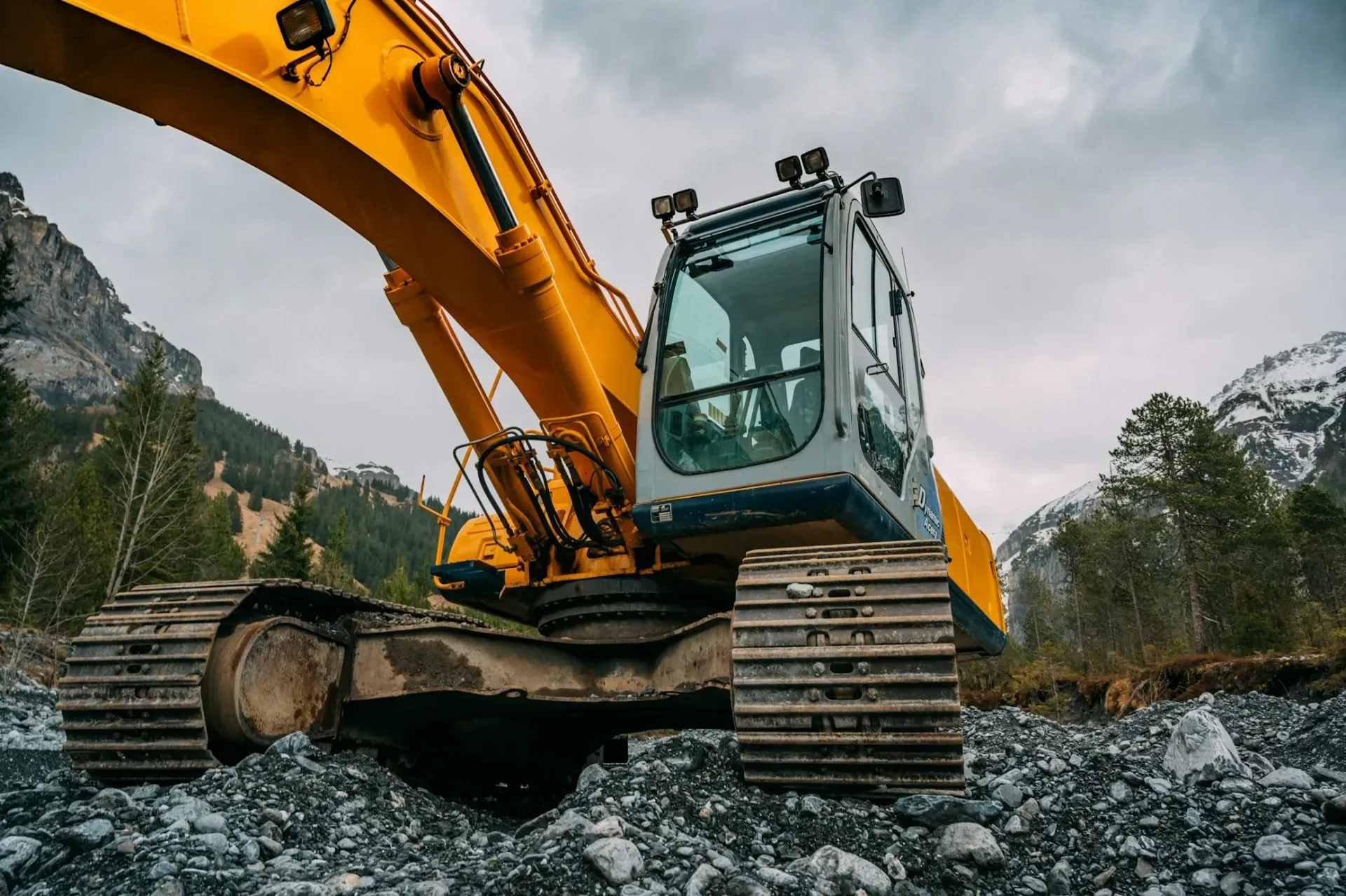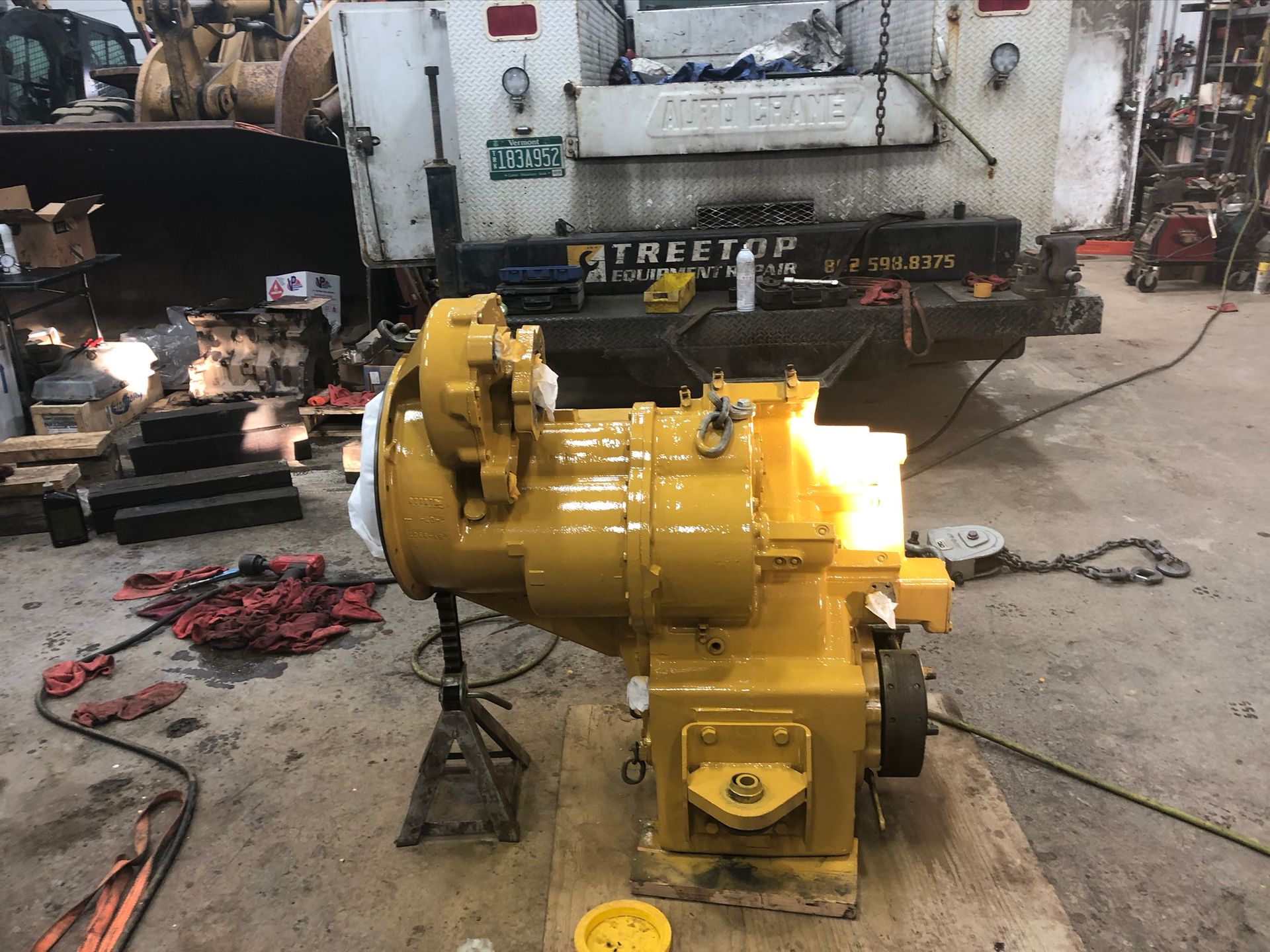Essential Tips for Heavy Equipment Maintenance

Heavy Equipment Maintenance: Best Practices and Tips
Heavy equipment is a backbone for many industries like construction and farming. These machines are essential, and maintaining them is important for safety, efficiency, and a longer lifespan. Regular maintenance can prevent breakdowns, extend the life of your equipment, and keep it running safely. In this guide, we'll share the best practices and tips for heavy equipment maintenance. Whether you're an experienced operator or new to heavy equipment, these tips will help you get the most out of your machines and reduce downtime.
What is Heavy Equipment Maintenance?
Heavy equipment maintenance involves regularly inspecting, cleaning, and servicing your machinery to keep it in good working order. This process is key to avoiding unexpected breakdowns and ensuring your equipment is always ready to use.
Common types of heavy equipment that require maintenance include:
- Excavators: Used for digging and moving large amounts of earth.
- Bulldozers: Ideal for pushing large quantities of soil, sand, and rubble.
- Cranes: Used for lifting and moving heavy objects.
- Loaders: Essential for loading materials onto trucks.
- Backhoes: Versatile machines for digging and loading tasks.
By understanding what heavy equipment maintenance involves, you can better appreciate the need for regular upkeep and the benefits it brings to your operations.
Preventive Maintenance
Preventive maintenance is about taking steps to prevent problems before they happen. This proactive approach ensures your equipment stays in good condition and helps avoid costly repairs.
Benefits of preventive maintenance include:
- Increased lifespan of your equipment
- Reduced downtime due to fewer unexpected breakdowns
- Improved safety for operators and workers
Here’s a checklist for preventive maintenance:
- Lubrication: Regularly oil moving parts to reduce friction and wear.
- Inspection: Check for signs of wear, leaks, or damage.
- Cleaning: Keep the equipment clean to prevent dirt and debris from causing damage.
- Filter replacement: Change filters regularly to ensure optimal performance.
- Fluid levels: Check and top off fluids like oil, coolant, and hydraulic fluid.
By following these preventive maintenance steps, you can keep your heavy equipment running smoothly and avoid unexpected issues.
Routine Maintenance Procedures
Routine maintenance involves regular tasks that keep your equipment in top condition. These tasks should be done daily, weekly, or monthly, depending on the equipment and how often it’s used.
Daily Maintenance Tasks
- Visual inspection: Look for any visible damage or leaks.
- Clean surfaces: Wipe down the equipment to remove dirt and debris.
- Check fluid levels: Ensure oil, coolant, and hydraulic fluid are at the correct levels.
- Inspect tires and tracks: Look for wear and ensure proper inflation.
Weekly Maintenance Tasks
- Lubricate moving parts: Apply grease to bearings, hinges, and other moving components.
- Inspect belts and hoses: Check for signs of wear or cracks and replace if necessary.
- Test safety features: Make sure all safety devices are working properly.
Monthly Maintenance Tasks
- Change oil and filters: Replace the oil and filters to keep the engine running smoothly.
- Check battery: Ensure the battery is charged and terminals are clean.
- Inspect brakes: Check brake pads and fluid levels, and test for proper function.
Following a routine maintenance schedule helps prevent small issues from becoming major problems and ensures your equipment is always ready for the job.
Common Maintenance Issues and Solutions
Even with the best maintenance plans, problems can still arise. Knowing the common issues and how to address them can save you time and money.
Common Issues
- Engine problems: This could be due to dirty filters, low oil, or worn-out parts.
- Hydraulic failures: Often caused by leaks, contaminated fluid, or worn seals.
- Electrical issues: Loose connections, corroded terminals, or dead batteries.
- Wear and tear on moving parts: Bearings, gears, and other components can wear out over time.
Practical Solutions
Engine Problems
- Solution: Regularly change oil and filters, and inspect the engine for leaks or worn parts.
Hydraulic Failures
- Solution: Check for and repair leaks, regularly change hydraulic fluid, and inspect seals.
Electrical Issues
- Solution: Keep battery terminals clean, ensure all connections are tight, and replace batteries as needed.
Wear and Tear
- Solution: Regularly lubricate moving parts and replace worn components promptly.
By being aware of these common issues and having solutions ready, you can address problems quickly and keep your equipment running smoothly.
Best Practices for Heavy Equipment Maintenance
Following best practices can enhance your maintenance routine and ensure your equipment operates efficiently.
Creating a Maintenance Schedule
- Plan regular maintenance: Set up a schedule for daily, weekly, and monthly tasks.
- Use manufacturer guidelines: Follow the recommended maintenance intervals and procedures.
Training Operators
- Educate on maintenance: Train operators to perform basic maintenance tasks and recognize issues.
- Safety training: Ensure operators know how to safely maintain and operate the equipment.
Using the Right Tools and Equipment
- Invest in quality tools: Use the appropriate tools for maintenance tasks to avoid damage.
- Keep tools in good condition: Regularly inspect and maintain your tools.
Keeping Detailed Maintenance Records
- Document everything: Record all maintenance activities, including inspections, repairs, and part replacements.
- Track performance: Use records to identify recurring issues and adjust your maintenance plan accordingly.
By adhering to these best practices, you can ensure your equipment stays in excellent condition and reduce the risk of unexpected breakdowns.
Safety Considerations
Safety is a top priority when maintaining heavy equipment. Following proper safety protocols can prevent accidents and injuries.
Importance of Safety During Maintenance
- Protects workers: Reduces the risk of injuries and accidents.
- Ensures equipment longevity: Proper safety measures can prevent damage to the machinery.
Safety Gear and Protocols
- Personal protective equipment (PPE): Wear safety glasses, gloves, hard hats, and steel-toed boots.
- Lockout/tagout procedures: Ensure equipment is properly shut down and secured before maintenance.
- Clear communication: Use signals or radios to communicate with team members during maintenance.
Training Staff on Safety Measures
- Regular safety training: Conduct safety training sessions to keep staff updated on best practices.
- Emergency procedures: Teach staff what to do in case of an emergency or accident.
By prioritizing safety and following these guidelines, you can create a safer work environment and ensure the well-being of your team.
When to Call in the Professionals
While regular maintenance can handle many tasks, there are times when you need a professional’s expertise.
Situations Where Professional Maintenance is Beneficial
- Complex repairs: Issues that require specialized knowledge or equipment.
- Safety concerns: Problems that could pose significant safety risks.
- Lack of resources: When your team doesn’t have the time, tools, or expertise.
Advantages of Using Professional Services
- Expertise: Professionals have the training and experience to handle complex issues.
- Specialized tools: Access to tools and equipment that may not be available in-house.
- Time savings: Professionals can often complete repairs faster, reducing downtime.
What to Look for in a Professional Maintenance Provider
- Reputation: Look for providers with positive reviews and a solid track record.
- Certifications: Ensure they have the necessary certifications and qualifications.
- Customer service: Choose a provider known for excellent customer service and support.
Calling in professionals when needed can ensure your equipment is maintained properly and efficiently, keeping your operations running smoothly.
The Bottom Line
Keeping your heavy equipment in top shape is essential for safety, efficiency, and longevity. Regular maintenance helps prevent breakdowns, saves money, and keeps your projects running smoothly. By following the best practices outlined in this guide, you can ensure your machinery remains reliable and effective.
Call to Action
Ready to take your equipment maintenance to the next level? Trust Tree Top Equipment Repair for all your needs. We specialize in hydraulic services, heavy machinery maintenance, and repairs for excavators, bulldozers, and cement mixers. Our precision diagnostics and quick turnaround ensure your equipment is back on site fast, keeping your projects on track.
Tree Top Equipment Repair also offers:
- Forestry Equipment Repair: Log loader service, skidder maintenance, and repairs for feller bunchers. We minimize downtime and maximize durability, ensuring your forestry machinery is always ready for the toughest tasks.
- Truck Repair: Diesel engine diagnostics, commercial vehicle service, and transmission services for semi-trucks. We keep your fleet running smoothly with comprehensive maintenance and repair.
- Agricultural/Farm Equipment Repair: Tractor repair, harvester maintenance, and more for combine harvesters, sprayers, and seeders. Our services ensure your farm machinery operates efficiently.
Located in Vermont, USA, Tree Top Equipment Repair is your go-to partner for maintaining peak performance of your equipment. Contact us today and keep your machinery in optimal condition!


